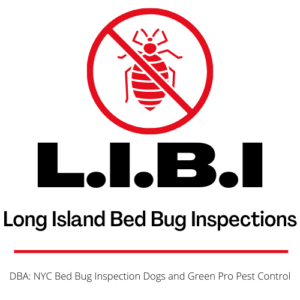Bed bugs are notorious pests that infest our homes, businesses, and public buildings. They create havoc that results in emotional, physical, and financial distress. While they may be small in size these pests can cause massive problems once they establish themselves in household.
Effective management of bed bug infestations begins with understanding some of the basic behavioral characteristics of these troublesome pests. The most fundamental behavioral characteristic is attraction. What attracts bed bugs to our homes and makes them so difficult to eliminate? So let’s take a moment to look at the top seven things bed bugs love about our homes.
1 – Warmth
Bed bugs are attracted to warm environments and they are highly adept at detecting heat. It’s one of the ways they locate suitable hosts. Bed bugs thrive at temperatures between 70°F and 90ºF. It’s no coincidence that these temps match the average of most homes.
When a bed bug senses heat it will move toward the source. Which is one of the reasons these pests are so often found in beds, mattresses and other areas where humans sleep or rest. Remember, the first priority for every hungry bed bug is to find a host that can provide a handy blood meal. The will follow body heat until they find a suitable victim.
2 – Carbon Dioxide
Carbon dioxide is a natural byproduct of human respiration. When we breathe out we release small amounts of carbon dioxide into the environment. Those emissions can be used by bed bugs to locate prospective hosts. Their sensory organs are highly developed and they can easily detect increased levels of carbon dioxide and use that information to guide them to their next blood meal.
This is one of the reasons bed bugs are generally more active at night. When we’re sleeping we consistently exhale carbon dioxide. We are also unconscious and sedentary for an extended period of time, making us easy targets for hungry bed bugs.
3 – Clutter
One of the longest lasting myths surround bed bugs is that they are attracted to dirty environments. Nothing could be further from the truth. Cleanliness has little to do with bed bugs behavior.
However, they do love a messy household. Clutter provides bed bugs with an abundance of hiding places, which is critical to their survival. They will hide in piles of clothes, stacks of paper, and other household clutter to avoid detection.
Reducing clutter can significantly reduce the number of hiding places available to bed bugs, making it easier to detect and or prevent infestations.
4 – Unwashed Laundry
This has less to do with dirt and more to do with scent. Laundry that hasn’t been through a wash is attractive to bed bugs because it smells of human beings. As human beings are their primary source of food it only makes sense that these pests would be drawn to our scent.
The good news is washing your laundry in hot water and drying in high heat will usually kill most bed bugs. This includes adults, nymphs, and even eggs. So staying on top of your laundry chores is a good way to head potential bed bug infestations off at the pass.
5 – Darkness
During the daylight hours bed bugs prefer to retreat to darkened areas of their environment. They want to remain unnoticed and undisturbed. Some of the more common hiding places include seams of mattresses, inside electrical outlets, behind baseboards, and under wall hangings. These darkened areas provide bed bugs with places to hide, reproduce, and grow in numbers until they spread throughout the home.
6 -Dark Colored Bed Linen
We know that bed bugs like the dark. It provides cover for their activities and makes them feel safe. Camouflage is critical to a bed bug’s survival. This is why they’re typically attracted to dark linens and upholstery.
Dark colored bed sheets make it easier for bed bugs to hunt and hide. So dark bed linen can be a mistake if you’re worried about potential bed bug infestations. It’s probably better to stick with lighter colors as they will make it easier for you to detect any of the tell-tale signs of bed bug activity such as blood stains or fecal stains.
7 – Cracks and Crevices
Bed bugs are small and flat. This makes it easy for them to hide in the tiniest of spaces. Homes with a lot of cracks and crevices provide ideal hiding places for bed bugs. Cracks in walls and gaps in baseboards are common hiding places for bed bugs, and they can easily squeeze into these spaces and remain hidden from view while they grow and reproduce.
Bed frames and other furniture are also tempting hiding places for these pests. Any joints, seams or cracks in the woodwork can be exploited by bed bugs looking for a home within your home. Sealing up these areas can help to prevent any stray bed bugs from establishing themselves within your house.
Learn to be Proactive
The best way to manage or eliminate a bed bug infestation is to stop it before it starts. Prevention is key and that means making your home less attractive to bed bugs looking for a place to set up shop. A better understanding of what attracts bed bugs to a home gives homeowners and pest control professionals an advantage when it comes to managing and eliminating bed bug infestations.
Published by Scott Palatnik
If you believe you’ve brought bed bugs into your home or office give us a call. We can help!
Now with 2 locations. On Long Island @ 516-619-649 or in NYC @ 212-299-9186
We are Long Island Bedbug Inspections.
Your Bedbug Inspection and Elimination Solution.


